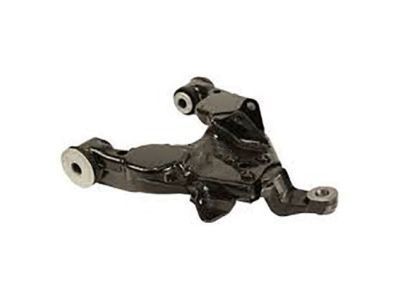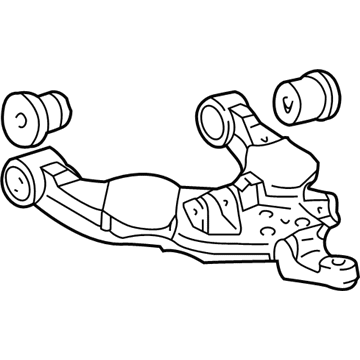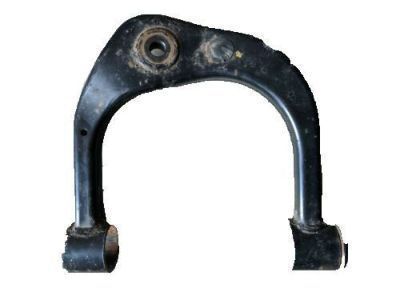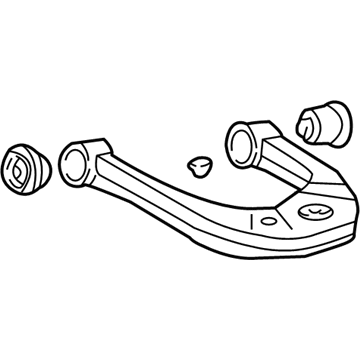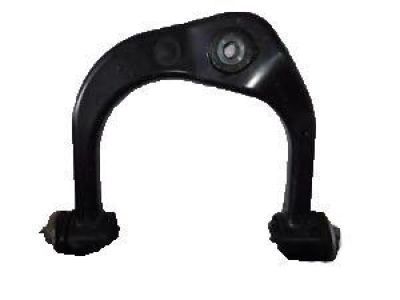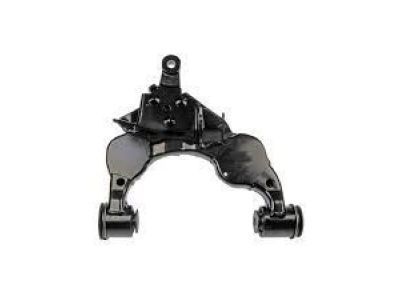×
ToyotaParts- Hello
- Login or Register
- Quick Links
- Live Chat
- Track Order
- Parts Availability
- RMA
- Help Center
- Contact Us
- Shop for
- Toyota Parts
- Scion Parts
My Garage
My Account
Cart
OEM 2003 Toyota Tundra Control Arm
Suspension Arm- Select Vehicle by Model
- Select Vehicle by VIN
Select Vehicle by Model
orMake
Model
Year
Select Vehicle by VIN
For the most accurate results, select vehicle by your VIN (Vehicle Identification Number).
4 Control Arms found

2003 Toyota Tundra Lower Control Arm, Passenger Side
Part Number: 48068-34020$232.56 MSRP: $332.04You Save: $99.48 (30%)Ships in 1-2 Business DaysProduct Specifications- Other Name: Arm Sub-Assembly, Suspension; Suspension Control Arm, Front Right Lower; Arm Sub-Assembly, Front Suspension, Lower Passenger Side; Suspension Control Arm; Control Arm
- Position: Passenger Side
- Replaces: 48068-34030
- Part Name Code: 48068
- Item Weight: 18.10 Pounds
- Item Dimensions: 22.8 x 5.9 x 17.6 inches
- Condition: New
- Fitment Type: Direct Replacement
- SKU: 48068-34020
- Warranty: This genuine part is guaranteed by Toyota's factory warranty.

2003 Toyota Tundra Upper Control Arm, Driver Side
Part Number: 48630-34010$218.78 MSRP: $312.36You Save: $93.58 (30%)Ships in 1-2 Business DaysProduct Specifications- Other Name: Arm Assembly, Suspension; Suspension Control Arm, Front Left Upper; Arm Assembly, Front Suspension, Upper Driver Side; Suspension Control Arm; Control Arm
- Position: Upper Driver Side
- Part Name Code: 48630
- Item Weight: 5.90 Pounds
- Item Dimensions: 16.1 x 3.5 x 12.9 inches
- Condition: New
- Fitment Type: Direct Replacement
- SKU: 48630-34010
- Warranty: This genuine part is guaranteed by Toyota's factory warranty.

2003 Toyota Tundra Upper Control Arm, Passenger Side
Part Number: 48610-34010$238.58 MSRP: $340.63You Save: $102.05 (30%)Ships in 1-2 Business DaysProduct Specifications- Other Name: Arm Assembly, Suspension; Suspension Control Arm, Front Right Upper; Arm Assembly, Front Suspension Upper, Passenger Side; Suspension Control Arm; Control Arm
- Position: Passenger Side
- Part Name Code: 48610
- Item Weight: 6.00 Pounds
- Item Dimensions: 16.1 x 3.6 x 12.7 inches
- Condition: New
- Fitment Type: Direct Replacement
- SKU: 48610-34010
- Warranty: This genuine part is guaranteed by Toyota's factory warranty.

2003 Toyota Tundra Lower Control Arm, Driver Side
Part Number: 48069-34020$230.03 MSRP: $328.43You Save: $98.40 (30%)Product Specifications- Other Name: Arm Sub-Assembly, Suspension; Suspension Control Arm, Front Left Lower; Arm Sub-Assembly, Front Suspension, Lower Driver Side; Suspension Control Arm; Control Arm
- Position: Lower Driver Side
- Replaces: 48069-34030
- Part Name Code: 48069
- Item Weight: 18.00 Pounds
- Item Dimensions: 22.4 x 5.9 x 17.6 inches
- Condition: New
- Fitment Type: Direct Replacement
- SKU: 48069-34020
- Warranty: This genuine part is guaranteed by Toyota's factory warranty.
2003 Toyota Tundra Control Arm
Looking for affordable OEM 2003 Toyota Tundra Control Arm? Explore our comprehensive catalogue of genuine 2003 Toyota Tundra Control Arm. All our parts are covered by the manufacturer's warranty. Plus, our straightforward return policy and speedy delivery service ensure an unparalleled shopping experience. We look forward to your visit!
2003 Toyota Tundra Control Arm Parts Q&A
- Q: How to service and repair the lower control arm on 2003 Toyota Tundra?A: Begin by removing both front wheels before disconnecting tie rod ends by removing their respective cotter pins and nuts followed by the use of Special Service Tool: 09610-20012 to separate tie rod ends from lower ball joints for both sides. The next step requires you to take out power steering gear set bolts and nuts before unconnecting the stabilizer bar link from the lower suspension arm through nut removal. A hexagon (6 mm) wrench must be used to hold the ball joint stud when it turns with the nut. To detach the shock absorber from the lower suspension arm, start by removing the lower side set nut and washer before preventing the bolt removal and protect the drive shaft boot by wrapping the bolt head with vinyl tape. Then pry down the lower suspension arm to disconnect the shock absorber. The lower ball joint removal from the lower suspension arm requires first removing its cotter pin and nut and cutting it loose with Special Service Tool: 09628-62011. The procedure for removing the lower suspension arm requires you to mark the front and rear cam plates together with the chassis frame. Subsequently remove the 2 cam plates with bolts and cams and lower suspension arm by shifting the power steering gear slightly backward but avoid damaging the power steering gear tubes. The bushing replacement process requires first lifting the bushing flange with a chisel and hammer followed by using Special Service Tool: 09613-26010, 09632-36010, 09950-00020 with a press to remove the bushing before installing a new No. 1 bushing with Special Service Tool: 09502-12010, 09631-12090, a press, and steel plate while maintaining correct direction orientation. Install the new No. 2 bushing by using Special Service Tool: 09631-12090 and 09950-60020 (09951-00680) with a press and steel plate while keeping it oriented correctly. The repair procedure requires removal of the front wheel to install Special Service Tool: 09922-10010 which needs a 23 Nm (235 kgf-cm, 17 ft. lbs.) torque before replacing the No. 2 spring bumper through the same tooling process with matching specifications. Restore the front wheel with a torque of 110 Nm (1,150 kgf-cm, 83 ft. lbs.). When installing the lower suspension arm to the chassis frame users should position the power steering gear in a slightly rearward direction and torque 130 Nm (1,325 kgf-cm, 96 ft. lbs.) with no damage to the power steering gear tubes. When the suspension reaches its stabilized point align the matchmarks present on the front and rear cam plates to the chassis frame before tightening the bolts. The lower ball joint installation requires attaching it to the lower suspension arm while using a new cotter pin and nut which should be torqued to 140 Nm (1,450 kgf-cm, 103 ft. lbs.). Additionally torque the nut up to 60 degrees but only when the cotter pin holes remain misaligned. The shock absorber must be connected to the lower suspension arm using a force of 135 Nm (1,400 kgf-cm, 100 ft. lbs.) before installing the stabilizer bar link to the lower suspension arm with a torque of 69 Nm (700 kgf-cm, 51 ft. lbs.). To prevent the ball joint from rotating with the nut install a hexagon (6 mm) wrench on the stud. Install the power steering gear, applying a torque of 165 Nm (1,700 kgf-cm, 122 ft. lbs.) for bolt A, 130 Nm (1,350 kgf-cm, 96 ft. lbs.) for nut B, and 165 Nm (1,700 kgf-cm, 122 ft. lbs.) for bolt and nut C. Connect the RH and LH tie rod ends to the lower ball joints with the nuts and new cotter pins, applying a torque of 91 Nm (930 kgf-cm, 67 ft. lbs.) and tightening the nut further up to 60 degrees if the cotter pin holes are not aligned, then install the RH and LH front wheels with a torque of 110 Nm (1,150 kgf-cm, 83 ft. lbs.) and check the front wheel alignment.
